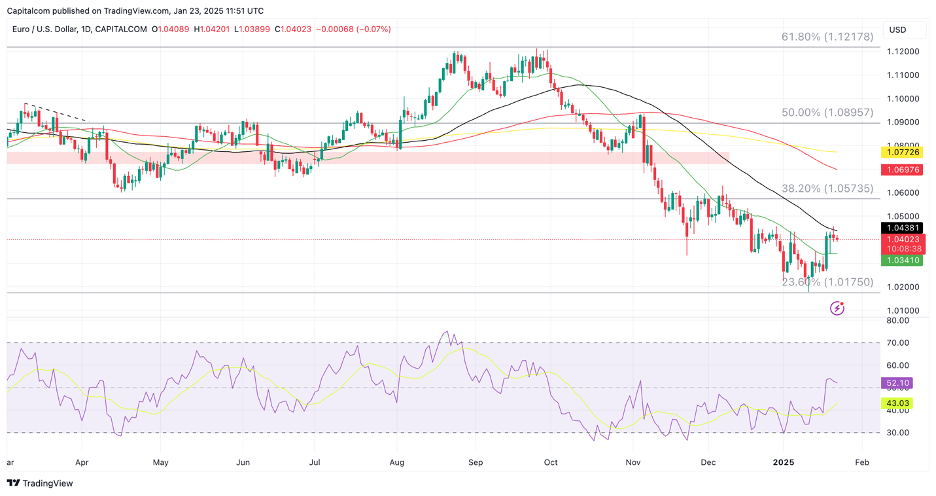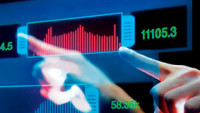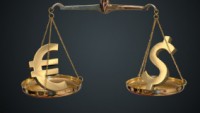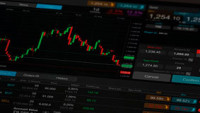EUR/USD is struggling to break above 1.04 despite the bullish momentum present earlier this week. The move on Wednesday saw the pair break above its 50-day simple moving average (SMA) before turning lower and settling around 1.0415, as with the previous candlesticks this week. The momentum seems to have run out at 1.0460 which was a level of resistance back in December. The RSI has briefly managed to push above 50 but it turning lower once again, suggesting the moves earlier this week have failed to break the bearish bias.
EUR/USD Daily Chart

Past performance is not a reliable indicator of future results.
Most of the moves continue to come from the dollar side of the pair, which justifies the 1.4% rise on Monday as the dollar suffered on Inauguration Day. The dollar has remained supported in the past few months as Trump’s threat of aggressive tariffs led to expectations of higher inflation further down the line, causing the Federal Reserve to slow down its rate-cutting cycle. But in Monday’s inauguration speech, Trump said he would impose 25% tariff hikes on Canada and Mexico and 10% on China, which will come into effect on February 1, suggesting a more gradual approach than what markets had been fearing. The dollar saw increased selling pressure as a result.
However, the bearish momentum in the dollar has been short-lived. Despite a more gradual implementation approach than originally expected, tariff increases will increase the price of goods, increasing inflation in the long term. For now, investors remain cautious about the consequences of Trump’s actions, keeping the dollar supported.
Meanwhile, ECB President Lagarde has advised that Europe should be prepared to respond to Trump’s possible tariff hikes. So far there hasn’t been a “blanket” tariff announced, and the hope is that they could be selective and focused on specific areas.
Regardless of Trump’s decision and its effect on inflation in Europe, markets expect the ECB to cut rates once every quarter this year, starting next week. Current market pricing shows a 96% chance that rates will be cut again by 25 basis points as Lagarde and her team adapt the financing conditions to weakening growth and lower inflation expectations. If the inflationary outlook changes as a result of Trump’s tariffs, we could see fewer cuts this year, which would likely spur some buying in the euro.












